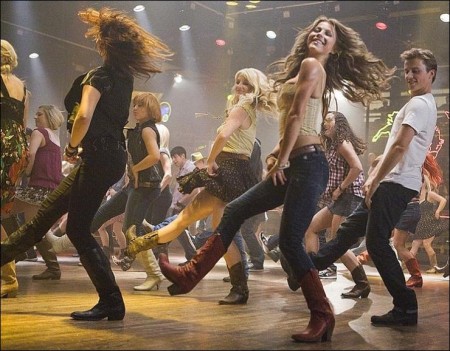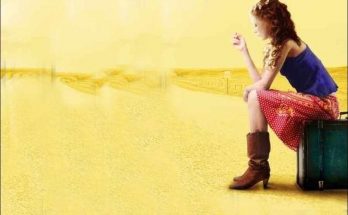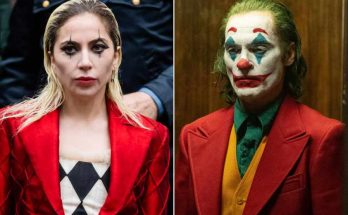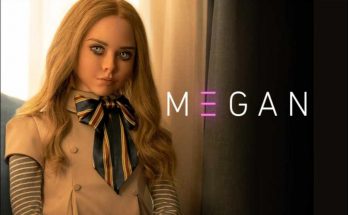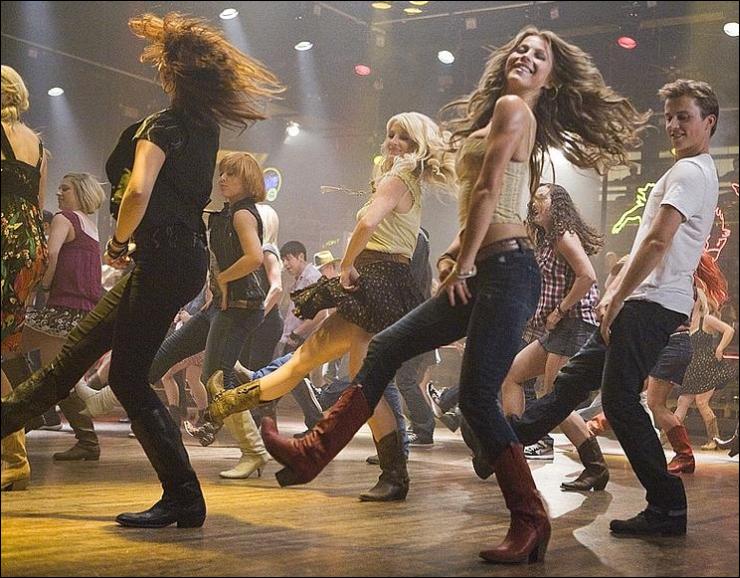Considered one of the first movies to incorporate equal parts dance and music in a non-traditional way, while maintaining a strong stand-alone dramatic storyline, it was hugely important to the filmmakers that this film be as powerful and organic. Original producers Craig Zadan and Neil Meron had worked with choreographer Jamal Sims on the film adaptation of “Hairspray” and knew he would be a perfect choice to update the dance elements of “Footloose” for a new generation.
Sims, whose extensive credits include the “Step Up” franchise, Madonna’s Sticky and Sweet tour, the 82nd Annual Academy Award and several appearances on So You Think You Can Dance, jumped at the opportunity to work on a project that made an impact on himself as a dancer. “The original “Footloose” was the first time I’d seen that kind of raw street dancing on the big screen and it made me want to dance,” recalls Sims. “I absolutely had to work on this movie.” “When Jamal and I first met, our common concern was how to have amazing choreography without it looking overly choreographed,” says Brewer.
A significant obstacle was upping the quality of the dancing and choreography to satisfy the sophisticated appetites of audiences without straying from the freestyle and organic nature of how the dancing services the story. “We had to always be aware of dialing it up and down because audiences are much more dance savvy and expect more because they’ve seen so much amazing dancing on television and in films,” says Sims.
Due to the facts that both leads are professional dancers, the filmmakers had the advantage of not needing an extensive rehearsal schedule. A few weeks prior to shooting, Sims worked with the leads and the background dancers separately and then brought the two groups together the weekend before shooting to work out the blocking and to make final changes. To give the actors the opportunity to focus on their dramatic performances before diving into the dance, the shooting schedule was structured so that all the dance numbers were at the end of the schedule. By the time the actors finally got to the dance sequences, after putting their all into the dramatic scenes and storyline, there was a great sense of elation and excitement.
“When we finally got to the dance number it was like ‘Whoo! We can finally dance and have fun!’ We felt like we were literally the kids of Bomont, we hadn’t danced for so long and were so grateful to do something light and fun and get it out,” recalls Hough.
In the film, Ren gets his first taste of the local culture when he is taken to the drive-in theater where the kids of Bomont gather to hang out. The drive-in is a safe haven where the kids play music and cut loose, away from adult supervision and local law enforcement. To reflect the spontaneous and rebellious nature of the gathering, the movement is less about structure and synchronicity and more about subculture and freestyle.
For Wormald, whose dance style leans more toward street dancing, the drive-in gave him the opportunity to be in his comfort zone and freestyle without the confines of hitting every beat. “We didn’t overwork the drive-in and wanted it to feel organic. If the cops or any adults came by we could break it up quickly, so it was just a free moving and fun hip-hop type of thing,” explains Wormald.
For Julianne Hough, whose ballroom and Latin dancing borders on being a national treasure, the drive-in dance sequence was out of her comfort zone and proved to be the most challenging. “When we first started working on the drive-in choreography with all the booty-shaking and popping, I couldn’t stop laughing. I wasn’t sure I could do it without looking totally uncomfortable, but Jamal was fantastic and helped make it incredibly fun for me.”
In the film, Ren, Ariel, Willard and Rusty also venture to Bomont’s county line to a Cowboys bar to blow off a little steam and do some ‘research’ for their fight to lift the dance ban. “While the drive-in was more of Kenny’s number, I felt like the Cowboys was mine and was my chance to shake my booty the way I know how to do it. I didn’t have to tone down the whipping of my hair, or ‘hairography’ as Craig Brewer calls it, and Cowboys gave me the chance to let it all go and have fun like a teenager.”
Although the dance style is country line dancing, which is not traditionally known for its heat index, Brewer’s objective was to amp it up and put a new spin on it. “Our version of country line dancing is pretty hot and energetic. It ain’t your Grandpa’s line dancing, that’s for sure,” laughs Brewer.
Reeling from the pressure and blowback from the community, Ren drives to a warehouse to purge his frustration and be alone. Just a man and his music. Brewer set out to capture the raw emotion of the moment and get inside the power of expression and movement. “For Jamal, Kenny and I, we look at the angry dance as the pinnacle of our existence. We knew we needed to nail it and it’s the perfect storm of all of our abilities.”
One of the most recognized and celebrated dance pieces ever filmed, the “Angry Dance” (as it is commonly known) was an enormous priority for Brewer and a major impetus to do the film. “Every filmmaker has a reason why they are doing a movie. I have a few for “Footloose,” but if I were to pick just one, it would absolutely be the angry dance,” says Brewer. Drawing inspiration from the locale of the story and Brewer’s own southern roots, the piece is more rock and blues leaning with a grittier and more emotionally raw feel to it. “Our angry dance is dangerous and there’s a sense of peril to it,” says Brewer. “Ren cuts himself and is covered in dust. This kind of dance isn’t about being pretty, it’s raw and it hurts.”
For the filmmakers and cast, shooting the dance finale piece was a pinch yourself type of moment. “I put on the red jacket, the song came on and, in that moment, I fully realized that we were really making “Footloose.” The reality of what we were doing really sunk in,” recalls Wormald.
The magnitude of dancing to the Kenny Loggins music doing original choreography wasn’t lost on Hough either. “We were at the rehearsal for the final dance and, at one point, both Kenny and I were standing on stools watching all the dancers prior to be slotted in, and it completely overwhelmed me. I got teary-eyed and I looked over at Kenny and saw tears in his eyes too. The magnitude of what we were doing hit us together and it was truly exhilarating.”
Related Link: Read the Full Production Notes for Footloose
Views: 238
